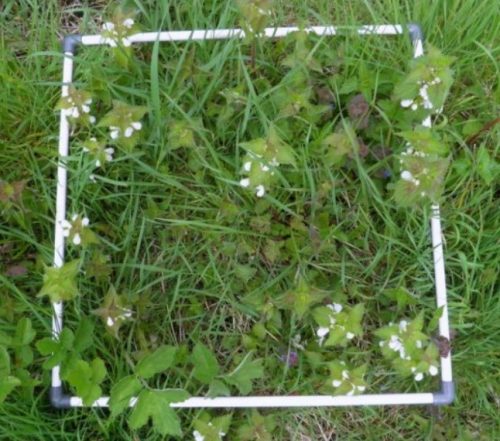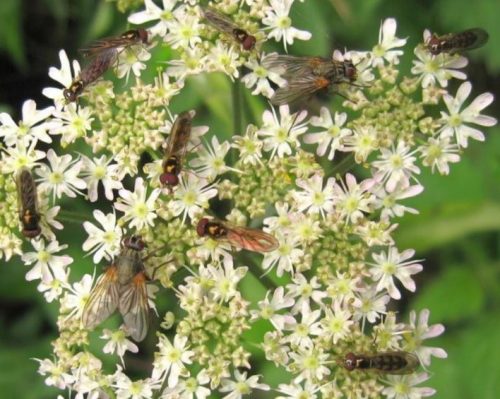The FIT Count is a new national survey scheme which aims to collect information on the numbers of insects using flowers across the country. The actual count is not difficult to do, or time consuming, but you need to take a few photos and be able to recognise different groups of insects – like telling a hoverfly from a wasp, and a honeybee from a bumblebee. The concept is easy and you can enter data online.
- You will need a 50cmx50cm frame or quadrat, a camera, a timer/watch, a FIT count survey form and a photo guide to the insect groups if you need it.
- On a sunny dry day between April and September, choose a location to survey. It can be anywhere with flowers that is convenient to get to, e.g. garden, hedgerow, arable field, meadow, churchyard, heathland.
- You can do the survey as a one-off, or go back monthly, or as often as you want to.
- Choose a target flower (bramble, white dead-nettle, buttercups or dandelions are ideal).
- Find a patch of it and put the quadrat on it. Answer the questions about your patch on the form.
- Get comfortable and start your timer for 10 minutes.
- Identify any insect that visits the target flowers in your patch, to the following groups: bumblebee, honey bee, solitary bee, wasp, hoverfly, other fly, beetles, butterflies & moths, other flies, other insects.
- Add each insect to the tally on your form. Try to count individual insects once only – even if they leave the patch and come back in.
- After 10 minutes, take some pictures of the insects you’ve been watching.
- You can Register, then enter the data online.
If you wish to monitor changes over time, a systematic sampling regime must be in place. This means that quadrat locations need to be identified before the survey begins, the frequency of visits decided in advance, and then observations made repeatedly from all locations in accordance with the predetermined sampling regime.

 A quadrat on white dead nettle, and a group of flies and hoverflies on hogweed © CEH
A quadrat on white dead nettle, and a group of flies and hoverflies on hogweed © CEH
